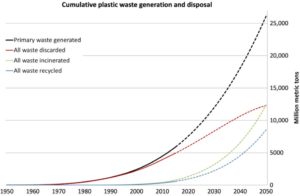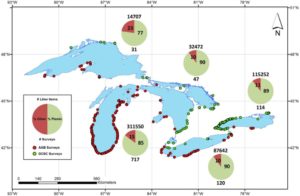Environment Canada released a scientific assessment of plastics pollution on January 30, 2020. The report concludes there is ample evidence that pollution from single-use plastics is harming birds, fish and other animals.
The purpose of the assessment was to summarize the current state of the science regarding the potential impacts of plastic pollution on the environment and human health, as well as to guide future research and inform decision-making on plastic pollution in Canada. It provides a review of the available information on plastic pollution, including its sources, occurrence, and fate, as well as on the potential effects of plastics on the environment and human health.
According to the assessment, in 2016, more than 29,000 tonnes of plastic waste ended up in waterways, parks and forests. Since plastic degrades very slowly and is persistent in the environment, the amount of plastic pollution is anticipated to continue to increase over time and adversely affect environment, wildlife and human health.
A figure from the report indicates increasing cumulative plastic waste generation and disposal:

The report also refers to efforts to remove litter from Canada’s shorelines. Approximately 21,300 cleanups have been organized by the Great Canadian Shoreline Cleanup across the country since 1994. Of the top 10 most common litter types collected during the 2018 cleanup, seven were either plastics or items containing plastic. Plastic items included cigarette butts, tiny plastics or foam, bottle caps, plastic bags, plastic bottles, straws and food wrappers.
This figure illustrates the contribution of plastics to shoreline litter collected during beach cleanup surveys of the Great Lakes:

“Science confirms that plastic pollution is everywhere and is negatively impacting our environment,” said Environment Minister Jonathan Wilkinson. “This assessment will inform our decisions as our government follows through on our commitment to ban harmful single-use plastics as soon as 2021 because Canadians expect us to.”
The specific list of items to be banned is still in progress but will lead to policies that begin eliminating their use starting in 2021. Banned products are expected to include straws, grocery bags and Styrofoam.
Environment Canada is funding research over the next two years to look more closely at how small particles of plastic impact human health. Plastic waste pieces larger than 5 mm are called “macroplastics” while the smaller ones are known as “microplastics.” The latter are tiny remnants of plastic that occur when larger pieces of plastic are broken apart, and are also shed off things like synthetic fabric and tires. The evidence is less clear about the harmful impacts of people or wildlife ingesting microplastics.
A new fund of $2.2 million over the next two years will fund research on microplastics. Projects are eligible for funding up to a maximum of $200,000 total per project and must be completed within two years and by March 31, 2022. The deadline for submitting a project is March 20, 2020. To submit a proposal, visit the Grants and Contributions Enterprise Management System.
Wilkinson said the finding on macroplastics is enough to proceed with the ban. The Draft Science Assessment of Plastic Pollution is available in Part I of the Canada Gazette for a 60-day public comment period. To read the full report, click here.








